Cimex lectularius
What is a Bed Bug?
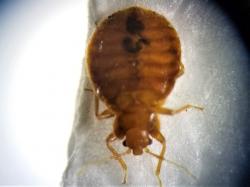
Bed bugs are a blood sucking insect that is a major pest to humans. They are also nocturnal and the treatment of bed bugs with insecticides is very difficult due to their cryptic nature and behavior as well as growing resistance to insecticides.
Do They Cause Disease?
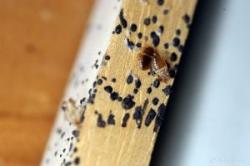
It has not been scientifically show that bed bugs can transmit pathogens to humans. Studies have shown that it is possible to infect mice with Trypanosoma cruzi, the causal agent of Chagas disease, by exposing them to infected bed bug feces as well as the possibility of diseases surviving in their gut.
Where Are They Found?
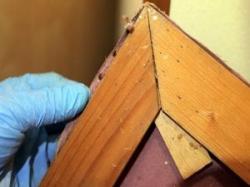
They are typically found in cracks and crevices, wall voids, headstands, nightstands, the mattress itself and a pretty much everywhere else that they can harbor within or around.
How Do You Treat Bed Bugs?
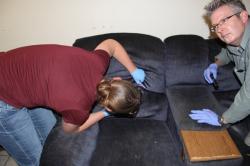
Typically bed bugs are controlled with varying tactics, such as: insecticides (sprays and dusts), heat, cold, vacuuming and steam. Bed bugs can be prevented/lessened by doing laundry, general maintenance and the removal of clutter in rooms.
Cost of Treatment?
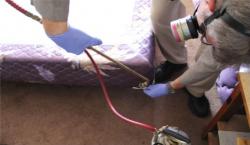
Treatment on average costs 350$ per room but could be up to 1000$ per room of a house depending on severity of infestation as well as other factors.
What Do They Feed On?
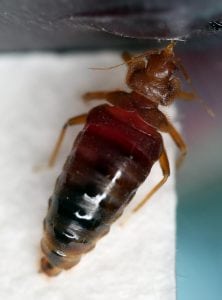
Humans are the primary host of bed bugs but they can also feed on cats, dogs and birds.
How Bad is Their Bite?
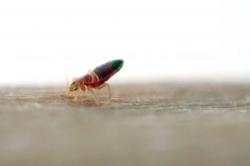
Bed bug bites often appear as small, itchy raised red areas on exposed skin. Their bite is often times considered worse than that of a mosquito bite in terms of itchiness. However, about 50% of people do not react to the insect bite. Often times being bitten has psychological impacts (insomnia, paranoia, etc.). If one is allergic to their bite they could potentially swell at the bite spot. (I personally am allergic and one bite swelled to about two thumb lengths…).
How Do They Feed?
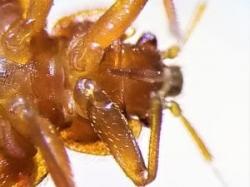
They feed using specialized mouth parts called a proboscis which is essentially a hypodermic needle used to pierce the skin and draw blood from capillary beds.
How Long Can They Live Without Feeding?
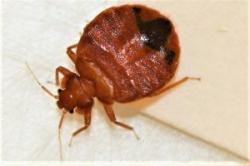
They have been shown through studies to be able to live up to 6 months without feeding.
How Big Are They?
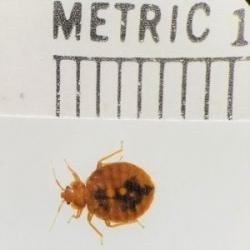
Their size ranges between 0.2-0.3 in. (5-7 mm) as an adult and are much smaller than 0.2 in. (5 mm) during their nymph stages. A 1st instar nymph is approximately 0.05 in. (1mm).
What Are Their Life Stages?
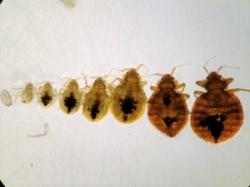
Bed bugs start as an egg and proceed through 5 nymph stages before becoming an adult. To progress through each nymph stage (molt) the bed bug must take a blood meal. Meaning that from hatching they must feed at least 5 times to become an adult.
How Long Is Their Life Span?
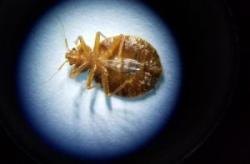
The typical lifespan of a bed bug has been shown to be just over 1 year in length.
Psychological Impact of Bed Bugs
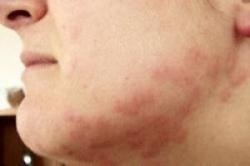
Bed bugs can have a major psychological impact on both those that are affected by an infestation and individuals who may not have even a single bed bug in their home. The bites of bed bugs can cause extreme discomfort and the thought of having to sleep in a bed that may have bed bugs often times breeds paranoia and depression in an individual. Also, those who have bed bugs are often times incorrectly stigmatized as "living in unclean conditions" even though bed bugs affect individuals in all social classes. Even individuals who had past infestations that are now gone or individuals who think they may have bed bugs experience psychological discomfort which is why bed bugs are a serious issue. They are a problem without social class constraint and can affect people even if they are not present in that persons home.

Interesting Facts
- Bed bugs have been found preserved in Egyptian tombs.
- Bed bugs mate in a very unique way called traumatic insemination, in which the male pierces the abdomen of the female when copulating to inject seminal fluids used for egg production.
- It would take 144,700,000,000 bed bugs at one time to drain a human being of all their blood (5.5 L). A loss of 15% blood volume is when humans start showing symptoms. To be drained of 15% of total blood would require 21,705,000,000 bed bugs which is impossible!
- Bed bugs are thought to be the descendants of bat bugs.
- People in the 19th century believed that bed bugs could cure malaria and would put them in tea and consume them.

